- News
- Reviews
- Bikes
- Components
- Bar tape & grips
- Bottom brackets
- Brake & gear cables
- Brake & STI levers
- Brake pads & spares
- Brakes
- Cassettes & freewheels
- Chains
- Chainsets & chainrings
- Derailleurs - front
- Derailleurs - rear
- Forks
- Gear levers & shifters
- Groupsets
- Handlebars & extensions
- Headsets
- Hubs
- Inner tubes
- Pedals
- Quick releases & skewers
- Saddles
- Seatposts
- Stems
- Wheels
- Tyres
- Tubeless valves
- Accessories
- Accessories - misc
- Computer mounts
- Bags
- Bar ends
- Bike bags & cases
- Bottle cages
- Bottles
- Cameras
- Car racks
- Child seats
- Computers
- Glasses
- GPS units
- Helmets
- Lights - front
- Lights - rear
- Lights - sets
- Locks
- Mirrors
- Mudguards
- Racks
- Pumps & CO2 inflators
- Puncture kits
- Reflectives
- Smart watches
- Stands and racks
- Trailers
- Clothing
- Health, fitness and nutrition
- Tools and workshop
- Miscellaneous
- Buyers Guides
- Features
- Forum
- Recommends
- Podcast
BUYER'S GUIDE
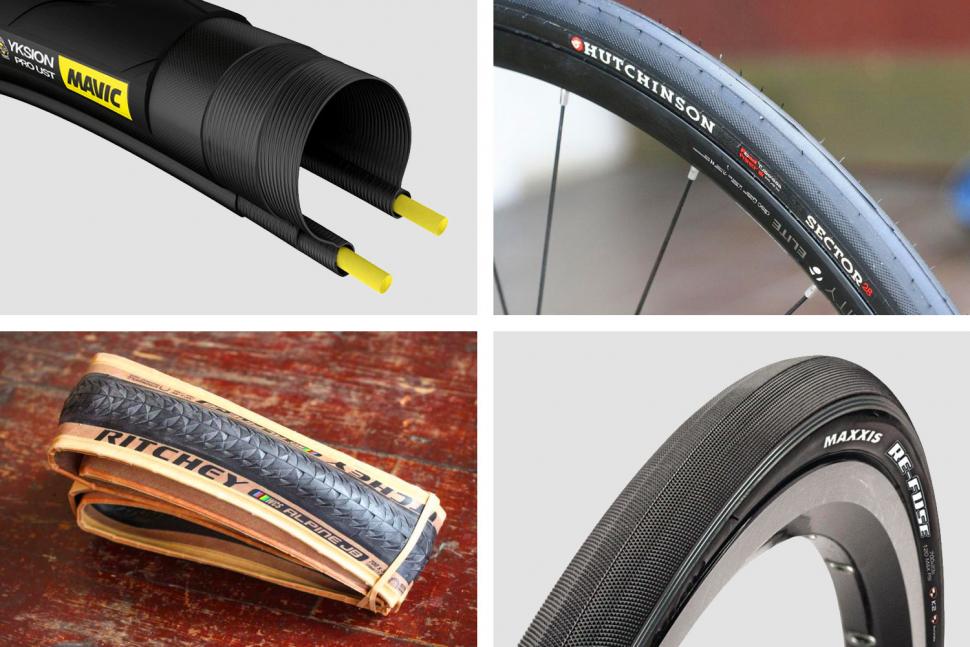 Buyers guide to tubeless tyres October 2018
Buyers guide to tubeless tyres October 2018Buyer's guide to tubeless tyres — find out all about new technology rubber
Want to go tubeless? Here are all your options in tyres.
Tubeless tyres are gradually gaining popularity as more riders become convinced that their improved ride and increased resistance to punctures are worth the cost of new wheels and tyres and the sometimes problematic fitting process. If you’re about to make the switch, here’s a look at your tyre options.
When tubeless tyres for road wheels first appeared you had very few choices. Hutchinson made tyres, Shimano and Stan’s NoTubes made wheels and conversion kits and, er, that was it. Now almost all tyre makers offer tubeless options, and even long-time hold-outs Michelin and Continental are on board.
Read more: How to fit a tubeless tyre
Read more: Road tubeless: everything you need to know — including how to convert
Tubeless tyre manufacturers
- Bontrager
- Continental
- Challenge
- Donnelly
- Ere Research
- Giant
- Goodyear
- Hutchinson
- IRC
- Kenda
- Maxxis
- Mavic
- Michelin
- Panaracer
- Pirelli
- Rene Herse
- Ritchey
- Schwalbe
- Specialized
- Teravail
- Veloflex
- Vittoria
- WTB
- Zipp
Bontrager
Bontrager offers a range of three tyres badged Tubeless Ready, which means what you need to get them working is sealant and either Bontrager’s special rim strips if you have Bontrager wheels, or other tubeless compatible wheels and valves. In ascending order of raciness, they’re the AW2, R2 and R3. We’ve tested and liked the latter as part of the Bontrager Road TLR Upgrade Kit.
| Tyre | Claimed weight | Price |
|---|---|---|
| Bontrager GR2 TLR Team Issue Gravel | 440g (40mm) | £40.00 |
| Bontrager GR1 TLR Team Issue Gravel | 430g (40mm) | £46.24 |
| Bontrager R2 TLR | 235g (25mm) | £29.99 |
| Bontrager R3 TLR | 200g (25mm) | £38.49 |
| Bontrager CX0 TLR | 395g (33mm) | £41.62 |
| Bontrager CX3 TLR | 405g (33mm) | £38.15 |
| Bontrager LT2 TLR | 395g (32mm), 475g (38mm) | £42.49 |
| Bontrager AW2 | 360g (26mm) | £27.99 |
Continental
Conti was one of the last two major tyre makers to hold out against tubeless, but late in 2018 announced a new tyre, the Grand Prix 5000, to succeed the much-loved Grand Prix 4000S II, and as well as regular clinchers there are tubeless versions too.
And they were worth the wait. The Grand Prix 5000 tubeless tyre takes everything that is improved with this latest generation tyre and adds tubeless compatibility for improved puncture resistance. They're relatively painless to set up and provide excellent performance in all conditions with low rolling resistance, good grip and durability.
| Tyre | Claimed weight | Price |
|---|---|---|
| Continental Terra Trail | 440g (650B), 460g (700C) | £50.00 |
| Continental Terra Speed | 390g (650B 35mm), 400g (650B 40mm), 400g (700C 35mm), 420g (700C 40mm) | £38.00 |
| Continental Grand Prix 5000 TL | 300g (25mm), 340g (28mm), 380g (32mm), 290g (650B) | £47.99 |
Challenge
Renowned for their fast, supple hand-made road tyres, Challenge has added tubeless tyres to its range. HTLR tyres are handmade, while VTLR are a more conventional vulcanised construction.
| Tyre | Claimed weight | Price |
|---|---|---|
| Challenge Strada Pro HTLR | 205g (25mm) | £56.00 |
| Challenge Strada VTLR | 205g (25mm) | £49.00 |
| Challenge Paris-Roubaix Pro HTLR | 215g (27mm) | £59.00 |
| Challenge Paris-Roubaix VTLR | 215g (27mm) | £50.00 |
| Challenge Strada Bianca Pro HTLR | 355g (33mm), 375g (36mm) | £68.00 |
| Challenge Strada Bianca VTLR | 355g (33mm), 375g (36mm) | £38.00 |
| Challenge Strada Bianca VTLR 650B | NA | NA |
| Challenge Chicane CX VTLR | NA | £39.00 |
| Challenge Grifo CX VTLR | 330g (33mm) | £41.49 |
| Challenge Limus CX | NA | £43.49 |
| Challenge Almanzo Pro HTLR | 385g (33mm) | £60.00 |
| Challenge Gravel Grinder Pro HTLR | 365g (33mm), 375g (38mm), 375g (42mm) | £60.00 |
| Challenge Gravel Grinder VTLR | 365g (33mm), 375g (38mm), 375g (42mm) | £36.99 - £44.99 |
| Challenge Gravel Grinder VTLR 650B | NA | NA |
Donnelly
Donnelly is the new name for the tyres formerly known as Clement, after Clement brand owner Pirelli decided to return to the tyre sector. Donnelly specialises in cyclocross tyres—all the 33mm tyres in the range are for cyclocross—but has a decent selection of fat rubber for gravel and bad roads too.
Check out importer 2Pure's eBay outlet for Donnelly bargains.
| Tyre | Claimed weight | Price |
|---|---|---|
| Donnelly BOS 700C | 456g (33mm) | £40.00 |
| Donnelly MXP 650B | 430g (33mm) | £31.99 |
| Donnelly MXP 700C | 446g (33mm) | £47.50 |
| Donnelly PDX 700C | 426g (33mm) | £42.50 |
| Donnelly Strada USH 650B | 472g (36mm), 536g (42mm), 644g (50mm) | £65.00 |
| Donnelly Strada USH 700C | 338g (32mm), 562 (40mm) | £45.00 |
| Donnelly X'Plor MSO 650B | 532g (42mm), 670g (50mm) | £66.00/pr |
| Donnelly X'Plor MSO 700C | 420g (30mm), 532g (40mm), 794g (50mm) | £48.75 |
| Donnelly EMP 650B | 558g (47mm) | NA |
| Donnelly EMP 700C | 484g (38mm), 618g (45mm) | £65.00 |
| Donnelly X'Plor CDG 700C | 420g (30mm) | £57.00/pr |
Ere Research
Ere Research CEO Piet van der Velde has almost three decades in the bike industry, most recently as product director of saddle maker Selle Italia before founding Ere Research in 2017. The company launched with an extensive range of tyres, with tubeless versions of almost all models, and some — the Tempus tyres for time trials — only available in a tubeless format.
| Tyre | Claimed weight | Price |
|---|---|---|
| Ere Research Genus | 235g (24mm) 242g (26mm) 268g (28mm) | £56.99 |
| Ere Research Omnia | 248g (24mm) 255g (26mm) 283g (28mm) 308g (30mm) | ~£55.00 |
| Ere Research Tenaci | 360g (30mm) 394g (32mm) 408g (36mm) n/a (40mm) | £56.99 |
| Ere Research Pontus | 255g (24mm) 276g (26mm) | ~£55.00 |
| Ere Research Tempus | 255g (26mm) 291g (28mm) | ~£45.00 |
Giant
The world's biggest bike manufacturer has switched to tubeless tyres and wheels on large swathe of its recent models. Giant has come up with a range that covers a full range of applications from racing to messing about in the dirt.
Giant's high-end component brand, Cadex, also offers two models of tubeless tyres, though the endurance-focused Classics aren't yet available in the UK.
| Tyre | Claimed weight | Price |
|---|---|---|
| Cadex Race Tubeless | 255g (23mm), 270g (25mm), 325g (28mm) | £64.99 |
| Cadex Classics Tubeless | 290g (25mm), 315g (28mm), 345g (32mm) | £64.99 |
| Giant Gavia Course 1 | 375g (25mm), 395g (28mm) | £35.99 |
| Giant Gavia Fondo 0 | 330g (28mm), 370g (32mm) | £41.99 |
| Giant Gavia Fondo 1 | 395g (28mm), 445g (32mm) | £39.99 |
| Giant Gavia Race 1 | 255g (25mm) | £33.97 |
| Giant Gavia Race 0 | 307g (25mm) | £39.99 |
| Giant Gavia AC 0 | 278g (25mm), 302g (28mm) | £49.99 |
| Giant Gavia AC 1 | 330g (25mm), 373g (28mm) | £39.99 |
| Giant Gavia AC 2 | 411g (25mm), 441g (28mm) | £29.99 |
| Giant Crosscut Tour 2 | 553g (30mm) | £29.69 |
| Giant Crosscut AT 2 | 673g (38mm) | £29.69 |
| Giant Crosscut Gravel 2 | 573g (40mm), 705g (45mm), 725g (50mm) | £29.69 |
| Giant Crosscut Metro | 607g (32mm), 635g (35mm) | £29.99 |
Goodyear
Goodyear announced a return to bicycle tyres in 2018 with a range that includes what the company describes as 'Tubeless Complete' tyres, which have "tubeless specific bead and casings, allowing for easy installation and superior air retention". With a tyre carcass that's impenetrable to sealant but not airtight, Tubeless Complete is a sort of halfway house between Road Tubeless, which has an air-retaining coat of butyl rubber on the inside of the tyre and Tubeless Ready, which has a standard tyre carcass. Goodyear recommends the use of sealant to make sure the bead properly seals against the rim, and says sealant won't seep through the Tubeless Complete carcass so it will still all be there when you need it to fix a puncture.
In August 2020 Goodyear announced an expansion of the range of road tyres with the Eagle F1 Supersport and Vector 4 Seasons bike tyres. To keep things nice and confusing, the names are shared with Goodyear's car tyre range, so that's what Google finds when you go searching for them. A report has been lodged with the Royal Society for the Prevention of Cruelty to Bicycle Product Journalists.
| Tyre | Claimed weight | Price |
|---|---|---|
| Goodyear Eagle F1 | 275g (25mm), 300g (28mm), 320g (30mm), 340g (32mm) | £50.00 |
| Goodyear Eagle F1 Supersport | 255g (25mm), 280g (28mm) | £50.00 |
| Goodyear Vector 4 Seasons | 290g (25mm), 325g (28mm), 350g (30mm), 360g (32mm) | £47.00 |
| Goodyear Eagle All Season | 300g (25mm), 316g (28mm), 326g (30mm), 377g (32mm) | £50.99 |
| Goodyear Transit Speed | 565g (35mm), 626g (40mm), 769g (50mm) | £39.99 |
| Goodyear Transit Tour | 722g (650B x 50mm), 565g (35mm), 626g (40mm), 769g (50mm) | £NA |
| Goodyear County | 526g (Premium 35mm), 441g (Ultimate 35mm) | £50.00 - £60.00 |
| Goodyear Connector | 542g (Premium 40mm), 463g (Ultimate 40mm) | £40.00 |
Hutchinson
Hutchinson launched tubeless tyres for road bikes back in 2006, so it’s no surprise the French tyre maker has a fairly big range. While most tyre makers have gone down the Tubeless Ready route with lightweight tyres that need sealant to keep the air in, Hutchinson also makes tyres to the original Road Tubeless spec, sealed with a coating of rubber inside the tyre.
Hutchinson's flagship tubeless tyre is the Fusion 5, which is available in a number of variants. There are Tubeless Ready versions that need sealant, and Road Tubeless versions that, on paper, don't need sealant, but that everyone uses sealant with anyway just to be safe. Both Road Tubeless and Tubeless Ready versions are available in Galactik, Performance and All Season variants.
Galactik is the lightest version, intended for racing; Performance is the all-rounder with a slightly thicker tread and All Season is more durable, with a thicker tread and grooves to allegedly disperse water in wet conditions. Road Tubeless Fusion 5s come in 23mm and 25mm widths, Tubeless Ready in 25mm, plus 28mm in Performance and All Season.
All Fusion 5s use Hutchinson's ElevenStorm rubber which provides very low rolling resistance and buckets of grip. Tubeless Ready versions have Hutchinson's Hardskin bead-to-bead protection to reduce cuts and punctures. Galactik Road Tubeless tyres have a light reinforcement under the tread, while Performance and All Season Road Tubeless tyres get extra protection in the form of a Kevlar band.
| Tyre | Claimed weight | Price |
|---|---|---|
| Hutchinson Fusion 5 Tubeless Ready All Season | 260g (25mm) | £34.00 |
| Hutchinson Fusion 5 Tubeless Ready Performance | 255g (25mm) | £33.50 |
| Hutchinson Fusion 5 Tubeless Ready Galactik | 240g (25mm) | £42.00 |
| Hutchinson Fusion 5 Road Tubeless All Season | 325g (25mm) | £39.99 |
| Hutchinson Fusion 5 Road Tubeless Performance | 315g (25mm) | NA |
| Hutchinson Fusion 5 Road Tubeless Galactik | 285g (25mm) | £69.00 |
| Hutchinson Fusion 3 Road Tubeless | 300g (25mm) | £34.99 |
| Hutchinson Intensive 2 Road Tubeless | 315g (25mm) | £31.99 |
| Hutchinson Sector 28 Tubeless Ready | 295g (28mm) | £44.95 |
| Hutchinson Overide 700C | 425g (38mm) | £29.95 - £31.95 |
| Hutchinson Touareg | 490g (40mm), 550g (45mm) | £29.99 - £32.99 |
IRC
IRC makes several tubeless or tubeless ready tyres, but they’re very rare in the UK; we’ve only been able to find one source. That’s a pity as IRC has been pushing road tubeless technology to make tyres lighter and faster. The Pro Tubeless tyres have internal coating based on latex rubber rather than synthetic butyl. That makes for lower rolling resistance, just as a regular clincher tyre is faster with a latex inner tube than a butyl one.
| Tyre | Claimed weight | Price |
|---|---|---|
| IRC Formula S-Light TLR | 220g (25mm), 250g (28mm), 275g (30mm) | £57.00 |
| IRC Formula Pro Tubeless Light | 285g (25mm) | £62.00 |
| IRC Formula Pro Tubeless RBCC | 270g (25mm), 315g (28mm), 330g (30mm) | £57.00 |
| IRC Roadlite Tubeless | 340g (25mm) | £46.99 |
| IRC Formula Pro X-guard Tubeless | 300g/340g/370g (25mm/28mm/30mm) | £57.00 |
| IRC Serac CX Mud Tubeless | 380g/435g (32mm/32mm X-Guard) | £57.00 |
| IRC Serac CX Sand Tubeless | 380g/435g (32mm/32mm X-Guard) | £57.00 |
| IRC Marbella Tubeless X-Guard | 330g (28mm) | £57.00 |
| IRC Boken | 470g (36mm), 490g (40mm) | £52.00 |
Kenda
Kenda's line of tubeless-ready tyres focuses on gravel and cyclocross tyres, with just one road tyre, the Valkyrie. They're designated KSCT, for Kenda Sealant-Compatible Tyre. Some models seem to be quite hard to find in the UK, but we've been broadly impressed by the Kenda gravel tyres we've tested.
Find a Kenda dealer
| Tyre | Claimed weight | Price |
|---|---|---|
| Kenda Alluvium Pro | 558g (45mm), 495g (40mm) | £33.99 |
| Kenda Flintridge Pro | 515g (40mm) 481 (35mm) | £36.99 |
| Kenda Cholla Pro | 428g (33mm) | £27.49 |
| Kenda Happy Medium Pro | 435g (32mm) 496g (35mm) 556g (42mm) | £31.99 |
| Kenda Small Block Eight Pro | 427g (37mm) 404g (32mm) | NA |
| Kenda Slant Six Pro | 522g (32mm) 591g (45mm) | NA |
| Kenda Kommando X Pro | 364g (32mm) | £35.78 |
| Kenda Valkyrie Pro | 234g (23mm) 252g (25mm) 283g (28mm) 327g (30mm) | £32.57 |
Maxxis
Maxxis is known for mountain bike tyres, but also offers tubeless-ready road tyres in a wide range of sizes and applications, plus a tubeless tyre that doesn't need sealant.
| Tyre | Claimed weight | Price |
|---|---|---|
| Maxxis Padrone TR | 250g (23mm), 260g (25mm), 300g (28mm) | £39.99 |
| Maxxis High Road | 297g (25mm) | £30.00 |
| Maxxis Radiale TL | 280g (22mm), 305g (24mm) | £75.12 |
| Maxxis Re-Fuse TR | 390g (32mm), 520g (40mm) | £40.99 |
| Maxxis Re-Fuse TR | 610g (50mm) | £43.99 |
| Maxxis Rambler SS TR | 380g (38mm/120tpi), 415g (38mm/60tpi), 375g (40mm/120tpi), 420g (40mm/60tpi) | £49.99 |
| Maxxis Rambler EXO TR | 603g (50mm) | £44.99 |
Mavic
Mavic jumped into the road tubeless sector with both boots in summer 2017, announcing a new standard — Road UST — and a big range of wheels. The accompanying tyre offerings are a bit thin at the moment — the Yksion Pro UST in 25mm and 28mm widths — but Mavic clearly anticipates other manufacturers adopting the standard when it's been ratified by the relevant international bodies.
Mavic still offers its all-purpose/gravel tyre in the old Road Tubeless standard, the 30mm Yksion Elite Allroad.
| Tyre | Claimed weight | Price |
|---|---|---|
| Mavic Yksion Elite AllRoad | 330g (30mm) | £49.00 |
| Mavic Yksion Pro UST 2 | 281g (25mm), 297g (28mm) | £39.81 |
Michelin
Michelin briefly partnered with Mavic to develop tubeless road tyres back in the mid-2000s, but both companies abandoned the project shortly afterwards. Having decided not to be the first maker of tubeless road tyres, Michelin has come in as the tubeless lanterne rouge, announcing a tubeless version of the new Power Road tyre in October 2019.
| Tyre | Claimed weight | Price |
|---|---|---|
| Michelin Power Road (32mm)(28mm) | NA | £46.00 |
| Michelin Power Cyclocross Mud | 360g | £32.99 |
| Michelin Power Jet TLR | 380g | £32.20 |
| Michelin Power Gravel | 360g (33mm), 467g (40mm) | £30.21 |
Panaracer
Panaracer joined the tubeless fray with the Race A Evo 3 Tubeless, and has just replaced it with the Race A Evo 4 Tubeless. The Japanese tyre maker has developed a brand new bead which it claims allows the tyre to be inflated using just a hand pump and claims this tyre increases puncture resistance by 24% compared to the previous Evo 2 tyre, thanks to a new Protite puncture proof material. The tread compound is also claimed to improve cornering performance.
| Tyre | Claimed weight | Price |
|---|---|---|
| Panaracer GravelKing Slick Tread | 310g (32mm), 330g (38mm) | £31.00 - £44.99 |
| Panaracer GravelKing SK | 320g (32mm), 380g (35mm), 430g (40mm), 480g (43mm), | £32.99 |
| Panaracer Race A Evo 4 | 210g (25mm) | £56.16 |
| Panaracer GravelKing AC | 300g (33mm), 360g (35mm) | £32.00 |
| Panaracer GravelKing Plus | 353g (35mm) | £42.00 |
Pirelli
After returning to bicycle tyres with the P Zero clincher series, Pirelli has recently added tubeless-ready rubber to the range. Our Stu Kerton was impressed, calling the Cinturato "a very good tyre, especially during these winter months, offering plenty of cold and wet weather grip while also providing loads of puncture proofing. The small cost to the rolling resistance is worth it for the durability too."
Read our review of the Pirelli Cinturato
| Tyre | Claimed weight | Price |
|---|---|---|
| Pirelli P Zero Race TLR SL | 236g (26mm) | £55.00 |
| Pirelli Cinturato TLR | 290g (26mm), 320g (28mm), 350g (32mm), 390g (35mm) | £46.00 |
| Pirelli P Zero Race TLR | 245g (24mm), 270g (26mm), 295g (28mm), 320g (30mm) | £49.99 |
Rene Herse
Previously known as Compass Cycles, Rene Herse grew out of the magazine Bicycle Quarterly, founded in 2002 by Jan Heine, a Seattle-based long-distance cyclist and journalist. Heine contends that wide, supple tyres perform better in every respect than skinny tyres, and perform better than would be expected from rolling resistance tests performed on smooth steel drums. And he's put his money on it with a line of tyres that includes tubeless models.
Read our review of Compass Cycles Barlow Pass tyres
| Tyre | Claimed weight | Price |
|---|---|---|
| Rene Herse Snoqualmie Pass TC 44mm | 378g/329g | £76-£92 |
| Rene Herse Fleecer Ridge | 595g-700g | £80-£95 |
| Rene Herse Barlow Pass TC 38mm | 430g/380g | £76-£92 |
| Rene Herse Steilacoom TC 38mm | 423g/370g | £80-£95 |
| Rene Herse Bon Jon Pass TC 35mm | 355g/303g | £76-£92 |
| Rene Herse Switchback Hill TC 650B x 48mm | 478g/413g | £80-£95 |
| Rene Herse Babyshoe Pass TC 650B x 42mm | 410g/373g | £76-£92 |
| Rene Herse Pumpkin Ridge TC 650B x 42mm | 480g/418g | £80-£95 |
| Rene Herse Juniper Ridge TC 650B x 48mm | 455g-550g | £80-£95 |
Ritchey
Ritchey has just one model of tubeless tyre, the 35mm version of the Alpine JB. We liked the non-tubeless 30mm equivalent, so for dirt road riding, the Alpine JB is well worth a look.
Find a Ritchey dealer
| Tyre | Claimed weight | Price |
|---|---|---|
| Ritchey WCS Alpine JB Stronghold 35mm | 400g | £51.99 |
Schwalbe
Schwalbe says “The future will be tubeless” in its blurb for the Schwalbe Pro One tyre, which it claims is its best tubeless tyre ever. We tested the slightly less advanced One Tubeless recently and found it rode brilliantly and, unlike many tubeless tyres, it was easy to get on the rim and to then pop into place on the bead seat.
Schwalbe offers a total of seven ‘Tubeless Easy’ tyres, from the Pro One, which is being reliably reported as having a super-low rolling resistance, to the aptly named Big One, a 60mm tyre intended for mountain bike beach racing but which we’ve included in case anyone’s thinking of building up a ‘monster-cross’ bike.
Read our review of the Schwalbe One Tubeless
Read our review of the Schwalbe Pro One Tubeless
Read our review of the Schwalbe S-One Tubeless
| Tyre | Claimed weight | Price |
|---|---|---|
| Schwalbe Pro One | 255g (25mm) | £38.20 |
| Schwalbe One | 275g (25mm), 295g (28mm), 305g (30mm) | £48.00 |
| Schwalbe G-One Speed | 330g (30mm) | £43.00 |
| Schwalbe G-One Allround | 400g (35mm) | £32.99 |
| Schwalbe G-One Speed 29x2.35 | 530g (60mm) | £39.99 |
| Schwalbe Marathon Supreme | 595g (40mm) | £37.99 |
| Schwalbe Marathon Almotion | 655g (40mm) | £52.99 |
| Schwalbe G-One Bite | 480g (40mm), 540g (45mm), 565g (50mm) | £39.00 |
| Schwalbe G-One Ultrabite | 530g (40mm), 610g (45mm), 665g (50mm) | £39.99 |
| Schwalbe X-One Bite | 410g (33mm) | £44.25 |
| Schwalbe X-One Speed | 380g (33mm) | £31.99 |
| Schwalbe X-One Allround | 380g (33mm), 390g (35mm) | £41.99 |
Specialized
Until recently, Specialized has focused on endurance and cyclo-cross riding with its Tubeless Ready tyres, which it spells 2Bliss because — well, who knows. Californians, eh? While the range is still gravelwards, Specialized offers a couple of standout road tyres in the S-Works Turbo RapidAir 2Bliss Ready and Roubaix Pro 2Bliss Ready.
| Tyre | Claimed weight | Price |
|---|---|---|
| Specialized Roubaix Road Tubeless | 295g (25mm) | £70.00 |
| Specialized Rhombus Pro 2Bliss Ready | 575g (42mm) | £45.00 |
| Specialized Terra Pro 2Bliss Ready | 370g (33mm) | £45.00 |
| Specialized Tracer Pro 2Bliss Ready | 365g (33mm) | £45.00 |
| Specialized S-Works Turbo RapidAir 2Bliss Ready | 260g (26mm), 305g (28mm) | £61.00 |
| Specialized Sawtooth 2Bliss Ready | 615g (42mm) | £30.00 |
| Specialized Pathfinder Pro 2Bliss Ready | £40.50 | |
| Specialized Roubaix Pro 2Bliss Ready | 375g (30mm) | £35.00 |
Teravail
US brand Teravail specialises in off-road tyres, both for traditional flat-bar mountain bikes and for gravel bikes.
| Tyre | Claimed weight | Price |
|---|---|---|
| Teravail Sparwood 650B | 614g (55mm) | £60.00 |
| Teravail Cannonball 700C | 430g (38mm) | £50.00 |
| Teravail Rutland 700C | NA | £50.00 |
Veloflex
Known for their high-end Italian-made tubulars and 'open tubular' clinchers, Veloflex have recently added a couple of models of tubeless tyres to their range.
| Tyre | Claimed weight | Price |
|---|---|---|
| Veloflex Corsa Evo TLR | 235g (25mm), 265g (28mm) | £41.00 |
| Veloflex Corsa Race TLR | 225g (25mm) | £45.00 |
Vittoria
Vittoria makes the big claim that its Corsa Speed graphene technology tyre is the fastest ever independently measured, and the lightest tubeless-ready tyre too. A dirt tyre, the Terreno Zero TNT G2.0 has recently joined the range.
Read our review of the Vittoria Corsa Speed G+ Isotech
Read our review of the Vittoria Terreno Zero TNT G2.0
| Tyre | Claimed weight | Price |
|---|---|---|
| Vittoria Terreno Zero TNT G2.0 | 510g (40mm), 435g (35mm), 380g (32mm), 560g (650B) | £34.00 |
| Vittoria Corsa TLR | 290g (25mm), 310g (28mm) | £54.00 |
| Vittoria Corsa Speed TLR | 225g (23mm), 240g (25mm) | £97.49/pr |
| Vittoria Corsa Control TLR | 300g (25mm), 315g (28mm), 320g (30mm) | £49.00 |
| Vittoria Rubino Pro TLR | 305g (25mm), 335g (28mm), 370g (30mm) | £39.00 |
WTB
WTB are known for mountain bike tyres so it's no surprise that they specialise in fat 650B rubber for mixed-surface antics or, as they more prosaically call it Road Plus. The range also includes cyclo-cross and road tyres.
| Tyre | Claimed weight | Price |
|---|---|---|
| WTB ByWay | 535g (47mm 650B) | £38.00 |
| WTB Horizon TCS | 515g (47mm 650B) | £40.00 |
| WTB Resolute TCS | 450g (42mm) | £38.00 |
| WTB Sendero TCS | 530g (47mm 650B) | £44.99 |
| WTB Exposure TCS Road | 310g (30mm), 315g (32mm), 370g (34mm) | £35.00 |
| WTB Nano TCS | 530g (40mm) | £38.00 |
| WTB Cross Boss TCS | 400g (35mm) | £27.00 |
| WTB Crosswolf TCS | 392g (32mm) | £27.00 |
Zipp
Wheel maker Zipp — part of the SRAM group — offers the Tangente Speed tubeless tyre in two sizes, 25mm and 28mm. We found them easy to install and fast-rolling, but they're expensive. When you can find them at all, that is. There don't seem to be any in stock anywhere at the moment
Zipp recently added a gravel bike tyre to the range, the Tangente Course G40 PR. They're excellent in dry conditions, but also not cheap.
| Tyre | Claimed weight | Price |
|---|---|---|
| Zipp Tangente RT25 | 292g | £NA |
| Zipp Tangente RT28 | 302g | £NA |
| Zipp Tangente Course G40 | 482g (40mm) | £54.40 |
About road.cc Buyer's Guides
The aim of road.cc buyer's guides is to give you the most, authoritative, objective and up-to-date buying advice. We continuously update and republish our guides, checking prices, availability and looking for the best deals.
Our guides include links to websites where you can buy the featured products. Like most sites we make a small amount of money if you buy something after clicking on one of those links. We want you to be happy with what you buy, so we only include a product if we think it's one of the best of its kind.
As far as possible that means recommending equipment that we have actually reviewed, but we also include products that are popular, highly-regarded benchmarks in their categories.
Here's some more information on how road.cc makes money.
You can also find further guides on our sister sites off.road.cc and ebiketips.
road.cc buyer's guides are maintained by the road.cc tech team. Email us with comments, corrections or queries.
John has been writing about bikes and cycling for over 30 years since discovering that people were mug enough to pay him for it rather than expecting him to do an honest day's work.
He was heavily involved in the mountain bike boom of the late 1980s as a racer, team manager and race promoter, and that led to writing for Mountain Biking UK magazine shortly after its inception. He got the gig by phoning up the editor and telling him the magazine was rubbish and he could do better. Rather than telling him to get lost, MBUK editor Tym Manley called John’s bluff and the rest is history.
Since then he has worked on MTB Pro magazine and was editor of Maximum Mountain Bike and Australian Mountain Bike magazines, before switching to the web in 2000 to work for CyclingNews.com. Along with road.cc founder Tony Farrelly, John was on the launch team for BikeRadar.com and subsequently became editor in chief of Future Publishing’s group of cycling magazines and websites, including Cycling Plus, MBUK, What Mountain Bike and Procycling.
John has also written for Cyclist magazine, edited the BikeMagic website and was founding editor of TotalWomensCycling.com before handing over to someone far more representative of the site's main audience.
He joined road.cc in 2013. He lives in Cambridge where the lack of hills is more than made up for by the headwinds.
Latest Comments
- kcr 2 hours 51 min ago
I think Livingston (no "e") has the best cycling infrastructure I have seen in Scotland. It has an extensive network of paths that are actually...
- kcr 3 hours 31 min ago
I'd say it is an extremely rare condition for most cyclists or runners.
- ErnieC 6 hours 17 min ago
or Team Bahrain ... selective outrage.
- newbankgyratory 7 hours 19 min ago
This website offers suitable data: https://www.automobiledimension.com/large-suv-4x4-cars.php
- newbankgyratory 7 hours 52 min ago
Perhaps park the goods in a US Customs Bonded warehouse and then import them out of there when the tariff nonsense settles down?...
- Dnnnnnn 5 hours 48 min ago
Good to see a road.cc review of what must be one of the UK's best-selling 'proper' road bikes....
- PRSboy 8 hours 47 min ago
Another thing ruined by the Americans
- Miller 10 hours 6 min ago
Nice to see WvA featuring in the finale.
- Miller 10 hours 9 min ago
I have known more than one elder statesman of the club die of a heart failure while out on a ride. Sometimes I feel that's about to happen to me,...
- Pub bike 10 hours 26 min ago
Via the "wireless active steering system".

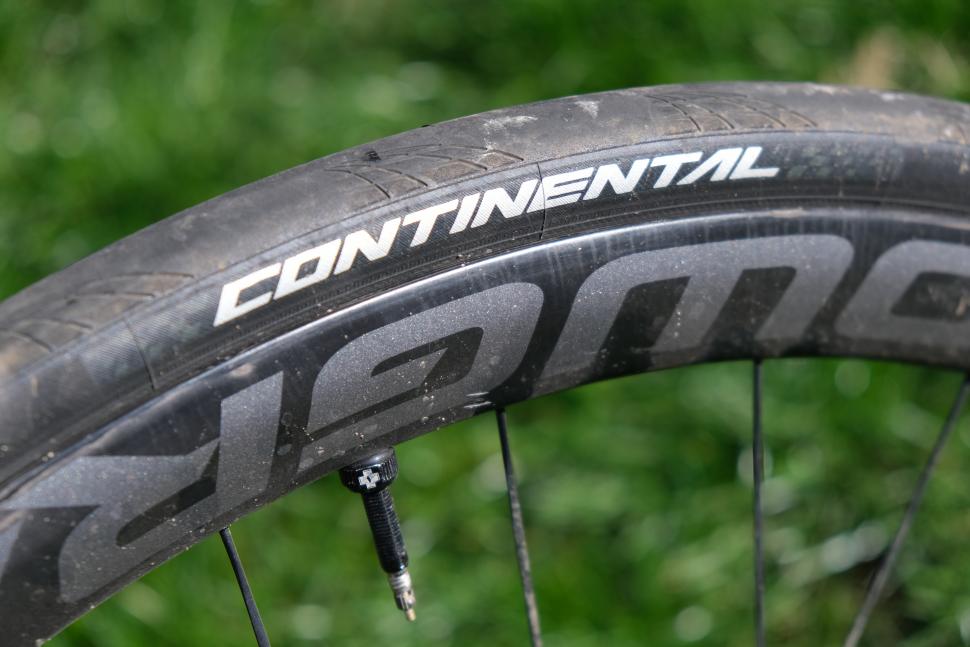
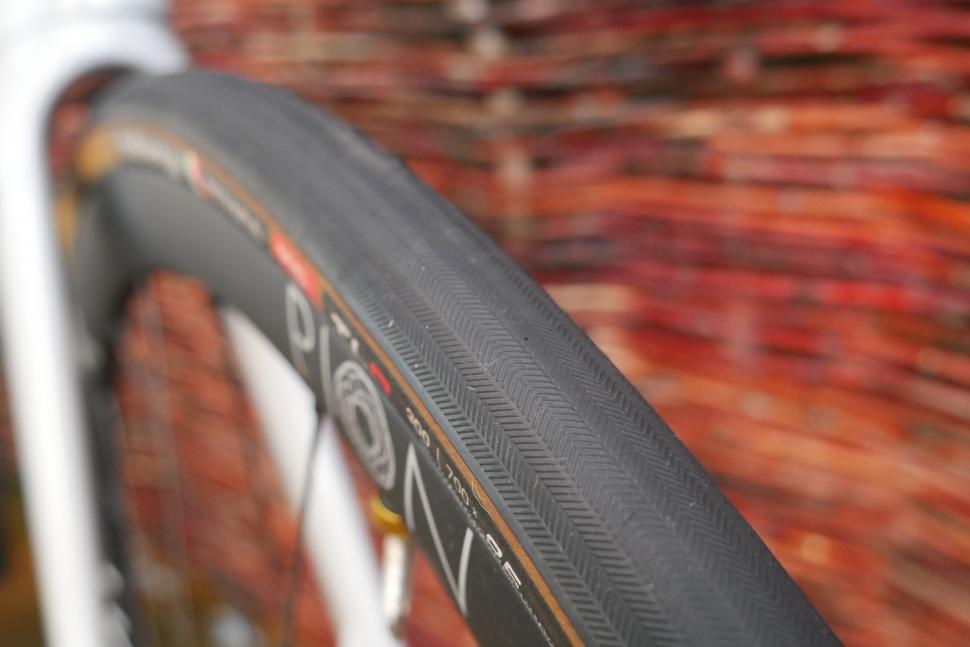
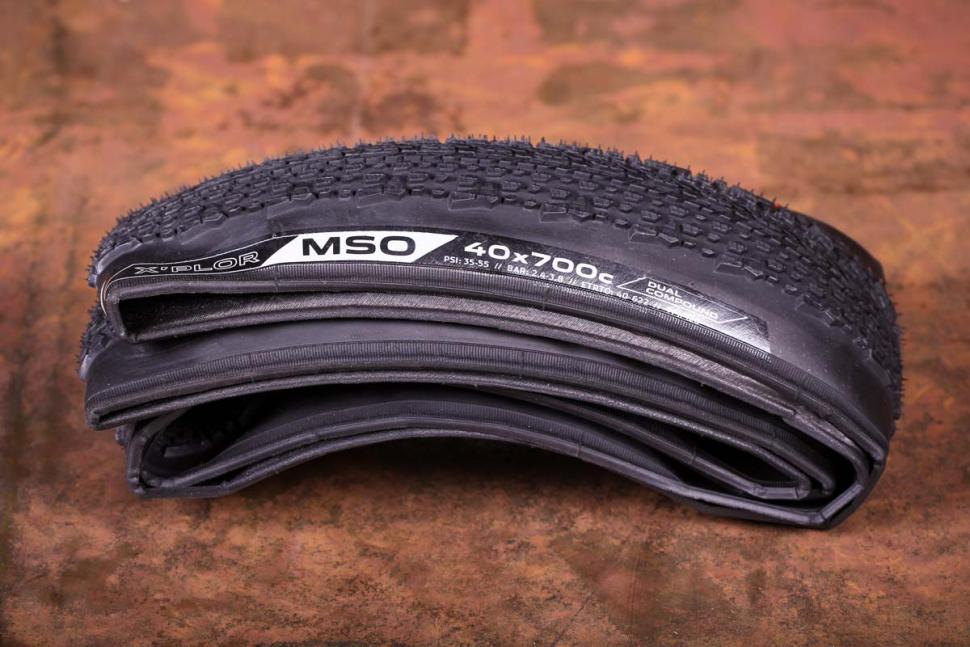
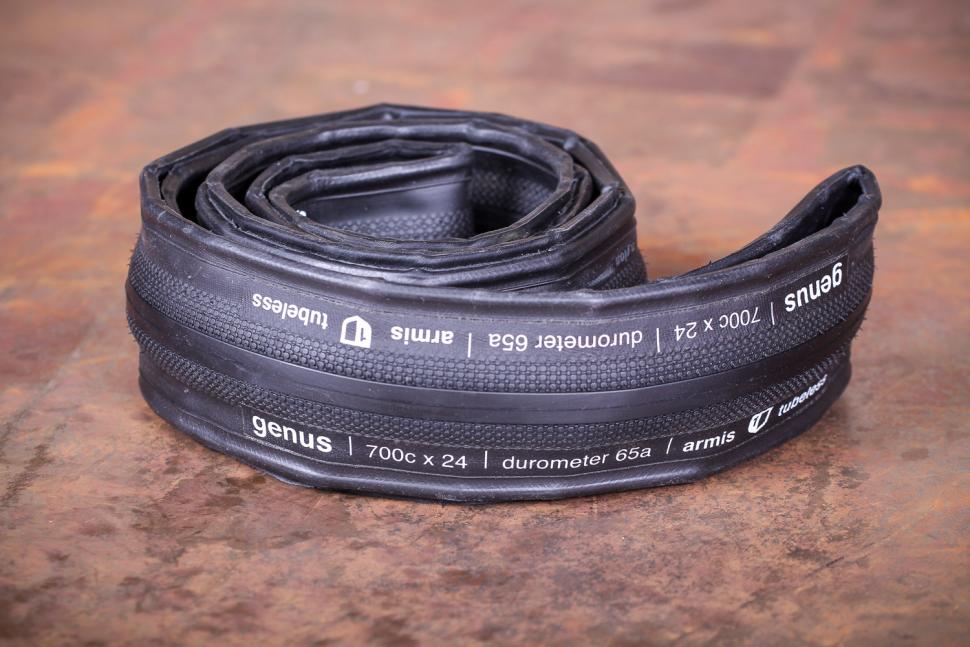


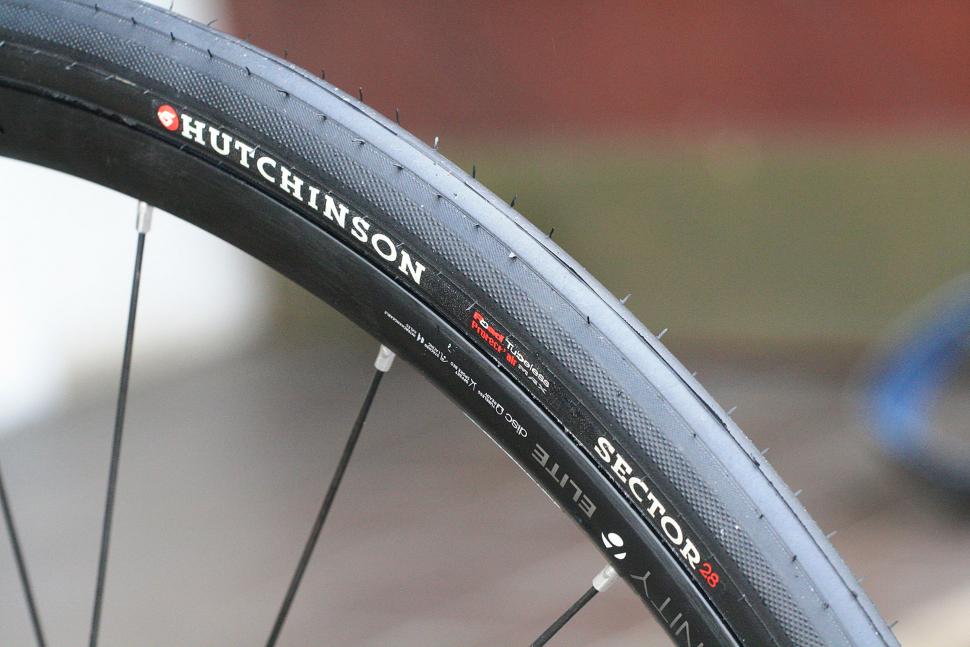


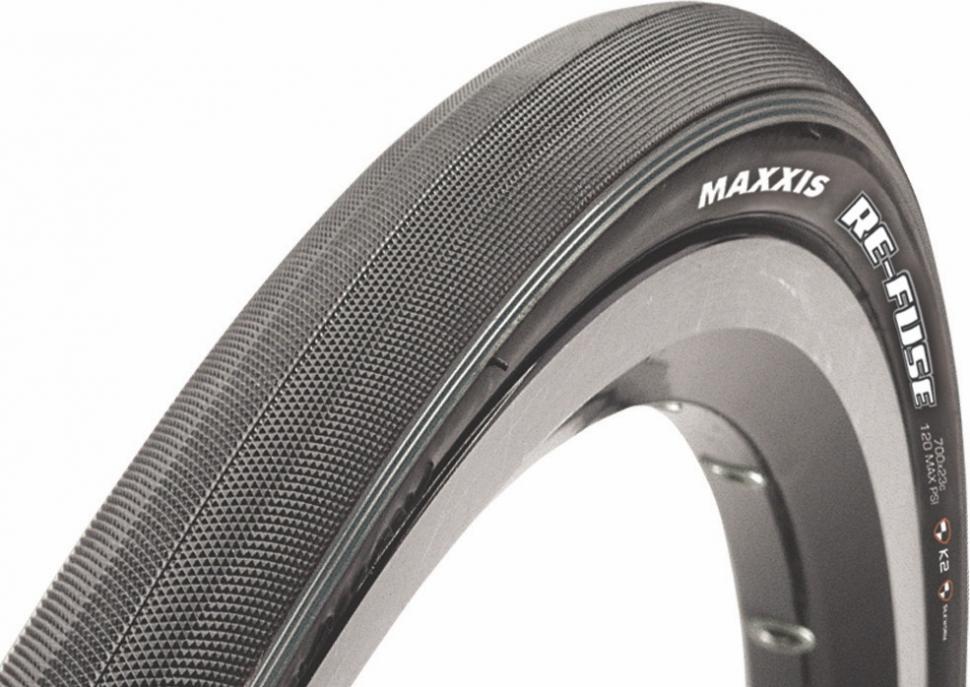
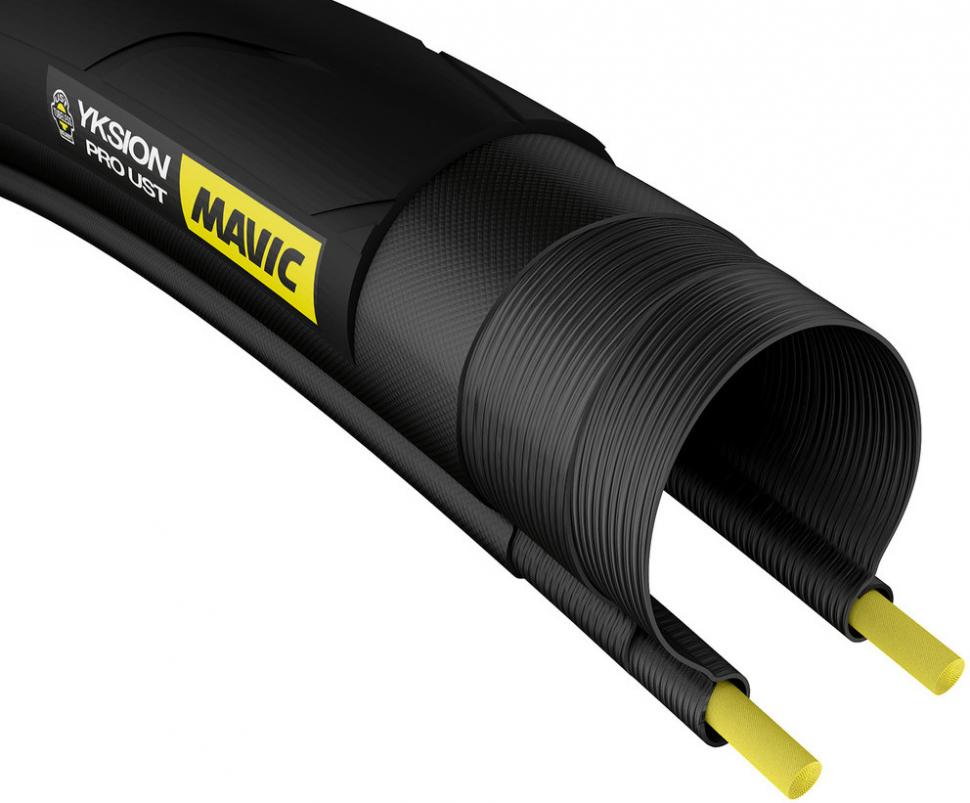
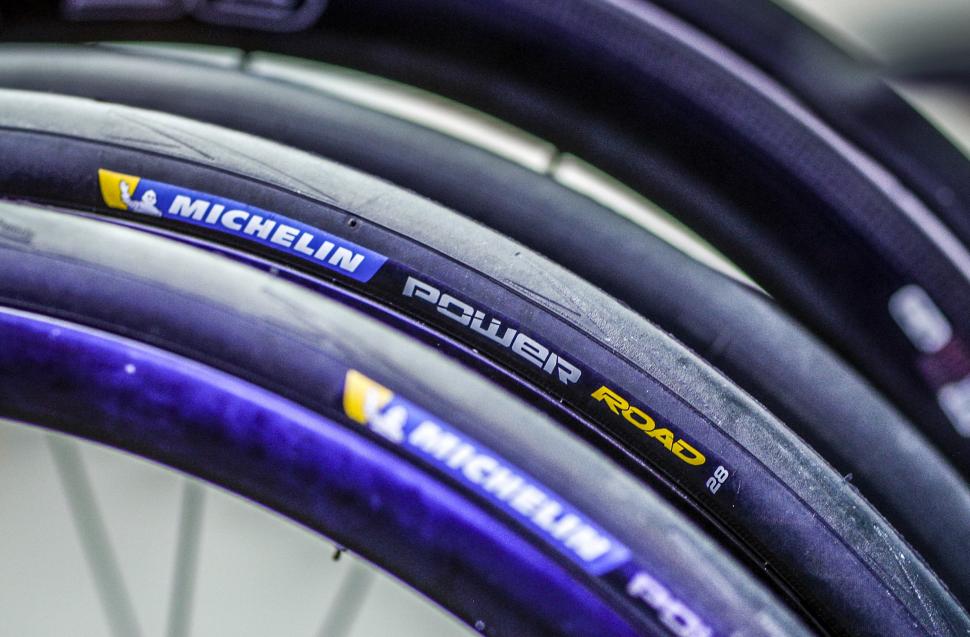

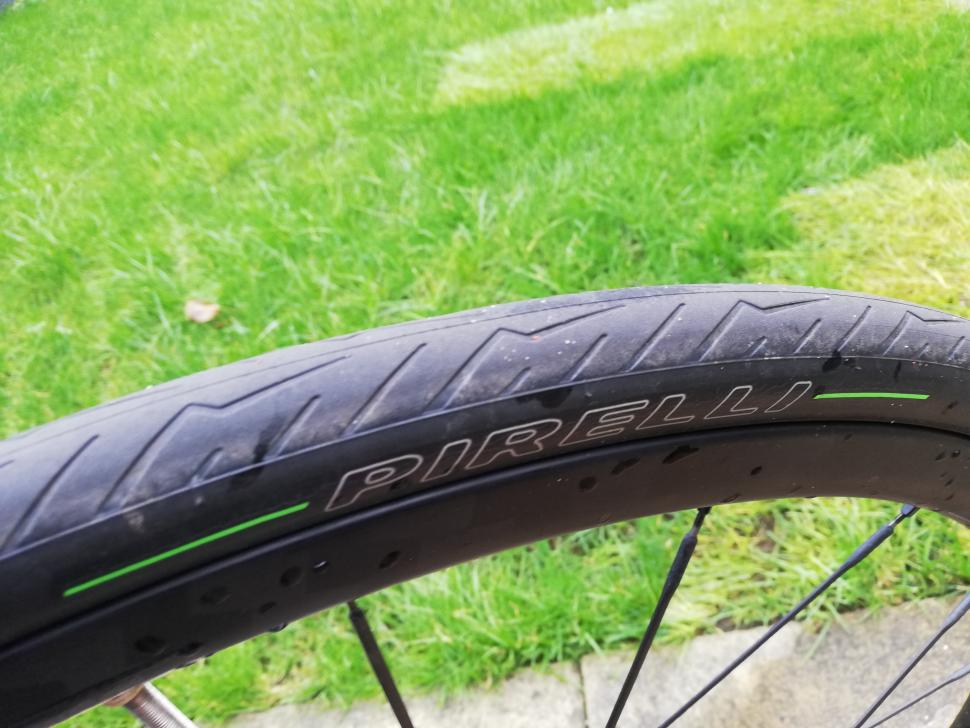
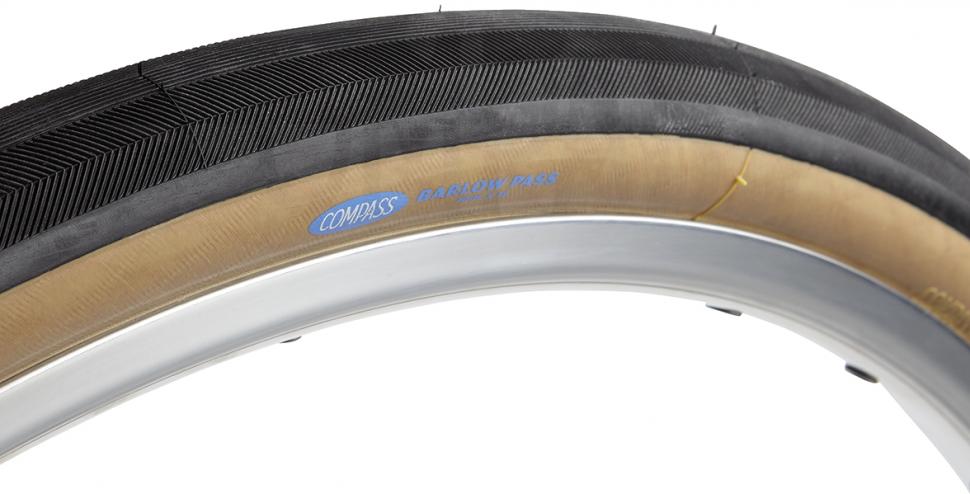

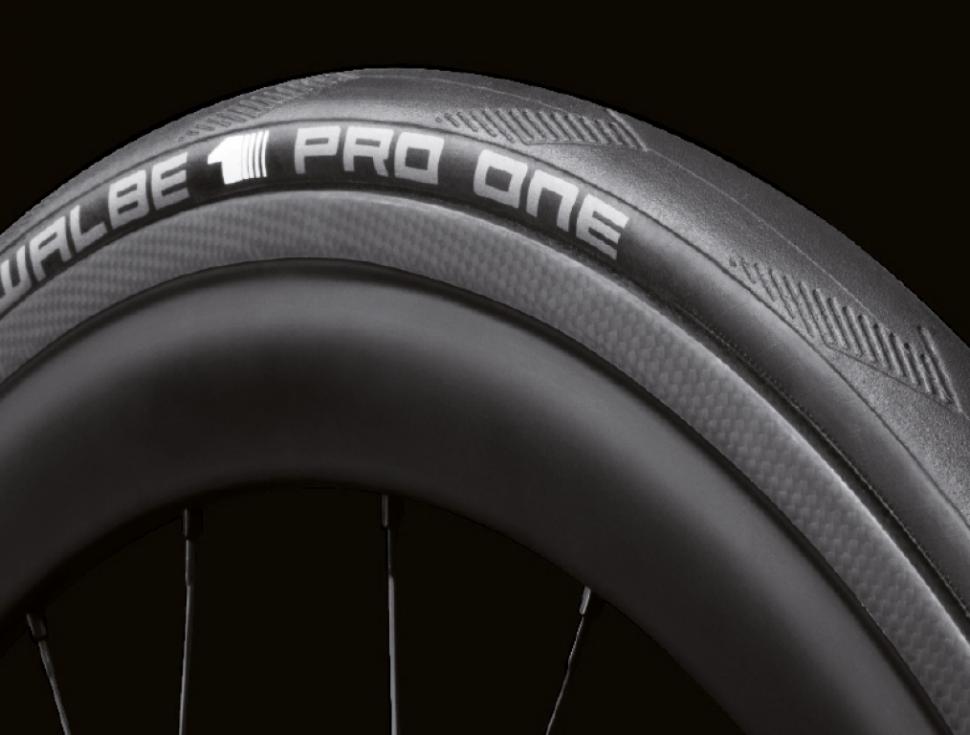
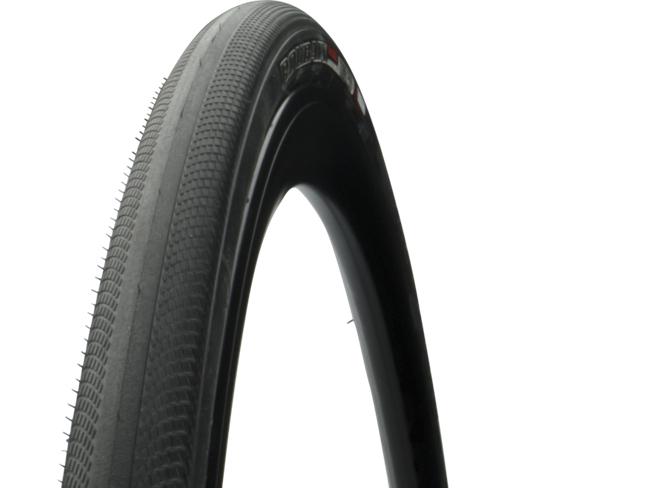
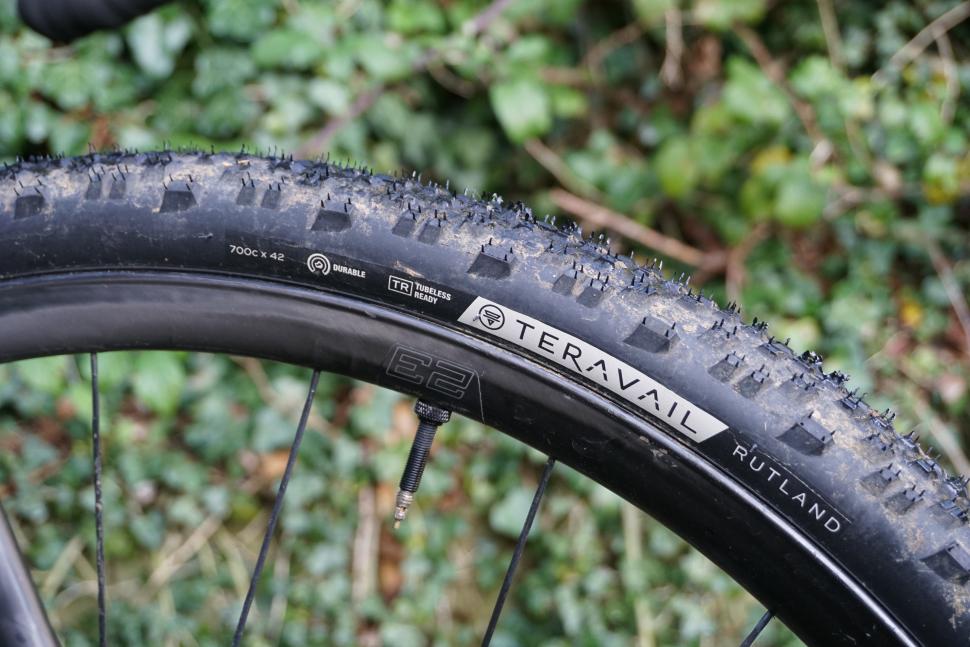
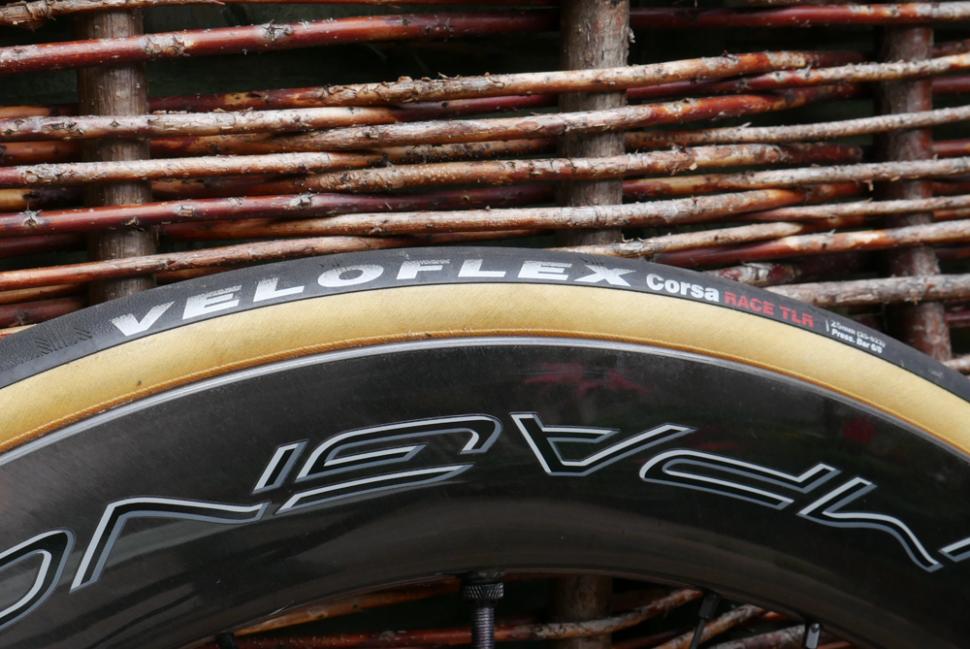

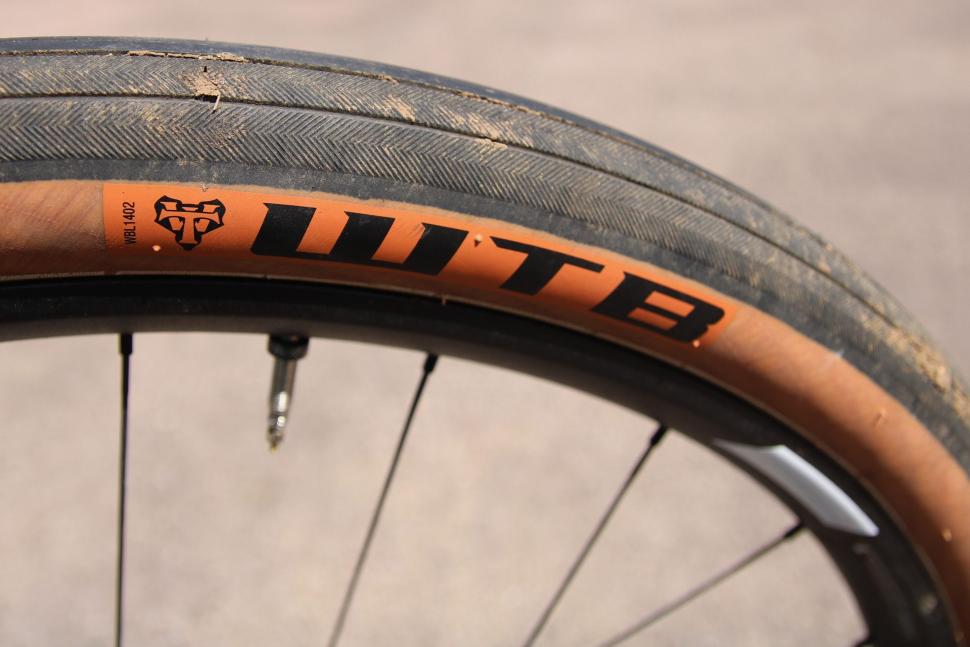

Add new comment
61 comments
I run tubeless on a lot of my wheels, theyre great. The most valuable aspect, is if you have a puncture, it wont rapid deflate, (my recent descent of Mt. Teide @ 40+mph) which can be a disaster at the wrong time. I also use sealant in my tubular continental tyres. I did a 60 mile ride and only noticed at the finish that i had a thorn/glass puncture. It had self sealed without any issue. Tubeless also has the benefit of running lower pressure for comfort
Well everyone is absolutely happy to pump his bike every week. That's OK if you ride only on sunday, but if you commute every day it's just as fun as riding without a saddle. I typically service my bike every 2 or 3 months, including pumping the tires. So I'll stick with tubes. Sure puncture resistant tires cost a bit of weigth, but if your commute is not too long or if there is public transportation you can skip the repair kit and pump.
And pinch flats? Really that's a urban legend. I think I had one in my life, and I am not too young anymore.
You inflate your tyres every 2-3 months??? what tubes are you using? I find I lose pressure far faster on my bike with tubes than my bike that runs on tubeless which typically loses ~5 PSI/week
Really, no it's not.
Hi Initialised, not completely knocking your opinion but what exactly did you irreparably pinch in that bunny-hop puncture ?
You missed the new 32mm 120TPI version of the Roubaix 2Bliss (perfect for Rollin Stones?). I picked up a pair for under £55, not quite as nice as supple as the 25mm 160 TPI version but at less than half the price they're really good.
Panaracer Gravelking smooth tread 32mm are tubeless compatible to 60psi and sub 300g, look cool in brown wall too, test them, only £30 each. Mavic Yksion all road tyres are terrible, prone to cuts.
Agreed - I've found they cut easily too, and they also have very poor wet grip in my experience. Mavic wheels are great but I so resent having to buy Mavic tyres with them that I don't buy them anymore.
They're good with tubes, glorious without.
No Continentals?
Conti donn't make any tubeless road tyres. They have too much of the inner tube market to want to undercut that
Just like with their MTB tyres, Conti will change their tune when road tubeless starts to affect their sales.
Been using Schwalbe Pro Ones for about a year (7000 miles) now - wouldn't go back to using tubes because of the ride quality and lack of punctures (or at least punctures I have noticed). Though, after removing a tyre I did once notice that the sealant had become just clear water, so wouldn't have been of any use as I obviously hadn't changed it soon enough, so I was lucky!
However, for about 6 months I've been using Milkit valves with the new Stans Race Sealant (even though Milkit and Stans say you can't do it I thought I'd give it a try, and I've had no problems whatsoever with valve clogging or anything else). That's solved my sealant worries completely, I just check it and replace it if necessary about once a month - it only takes 10-15 minutes for the whole job and doesn't require the tyre to be removed or even deflated. Also I've found that I now rarely have to put any air in the tyres, they retain their pressure really well, so I guess that the valve, rim tape, and bead have all bedded-in really well because they haven't had to be disturbed at all.
PS you don't have to pay the stated price for Pro Ones, they are widely available for about half that price.
I didn't get on well with Pro Ones, the first got an un fixable 4mm slash in the middle of the tread and I managed to pinch flat the other hopping a kerb, aggain irreperable.
But my experience is probably because I dared venture ever so slightly off-road with them, probably the fastest tyre I've used on good tarmac.
Hi,
I've recently switched over to some IRC RBCC 25mm and find them excellent in both the wet and dry. I was previously using the included Mavic UST tyres on my Krysium Elite wheels, but I never felt as if they were providing me as much grip in the wet and they seemed to cut up easily round the roads in Kent where I live.
Since using the IRC, they wear well and have next to no cuts etc and seem well planted in the wet and provide a decent supple ride..they also seem to produce a nice road noise when at speed.
I am a big fan of tubeless, espescially with the winter we are having. I may have had a puncture, i wouldn't know, I haven't had to stop by the roadside to repair a puncture, with cold freezing hands, cursing tyre levers and the world in general.
Now riding IRC Formula Pro RBCC tubeless road tyres from the Cycle Clinic on their Paceni tubeless rims. Compared to the Hutchinson Fusion tyres they are far harder wearing and crucially, provide excellent grip in the damp gritty conditions we seem to have persistently at the moment. Run at 80psi they are comfortable in the lanes and haven't got a mark on them despite the flinty nature of the roads around Suffolk. Wouldn't go back to tubes now.
Been riding schwalbe pro one tyres all of this year. They feel great in 28mm and grip great, plus I've had several punctures which have all self healed except one 5mm slice. Have had to replace the latter. Haven't noticed any particular gains in rolling friction etc, but neither do they feel heavier than my previous conti gp4000s.
You do have to pump them up before each ride as they lose 10psi overnight but then I always check my tyres before each ride anyway.
Just tried using some Shoe Goo on an almost new Schwalbe Pro tyre that got a bad 5mm star shaped puncture.
Sealant had sealed the puncture fine and the Shoe Goo has filled in the hole in the rubber.
200 miles later and the Shoe Goo is still there and no further problems.
I made sure the hole was clean and dry and gave the Shoe Goo a couple of days to go off before riding.
For a larger puncture I would consider patching the inside as well.
Tubeless or not you can't do much if the inner casing is badly damaged but I've been riding tubeless on my bikes for years now, had several punctures but have never had to stop to fix them: sealant has just done the job as I've carried on cycling.
I also use about 50% more sealant (Stans) than recommended and change it a couple of times a year. Tyres tend to lose 5-10psi per week but I check them before every ride anyway when I'm checking brakes/gears etc.
Tubeless for me everytime!
You need to add the Maxxis tubeless tyres in there. I've been running 25C Padrones on my road bike all year, and 40C Ramblers on my gravel bike. Both are good tyres, the Padrones are notably quick and grippy, if slighty on the narrow side.
I run Hutchinson Sector 28s on [wide] Pacenti SL25 rims at 40PSi, any higher and they are way too hard and bouncey. They get absolutely hammered both on and seriously off road. Riding on road can be pretty brutal at times too with the state of many UK roads. I would get pinch flats weekly if I had tubes going by how often I feel my rims on stones, edges etc. The other massive benefit is that even when I had tyres badly sliced, the tyre deflates slowly enough that I can stop safely to then fix things. Had two big slashes on MTB tyres and one on my 40c tyres with no bouncing along floor drama as a result. Found several large metal spikes in one tyre after some metal swarf on road sliced through my front MTB tyre. Which must have been there a while.
Possibly the best thing to happen to bikes this century. You can run the correct pressure instead of pumping tyres too stupidly high in order to avoid pinch flats. Rolls better too.
@nniff - you can get the Schwalbe Pro-Ones a lot cheaper: £35 at Wiggle or you can get a pair with sealant and fitting liquid for £70: https://www.mantel.com/uk/schwalbe-pro-one-tubeless-set-doc-blue
My two pennnyworth:
Schwalbe pro-one on one of my bikes. Good when they're working and a PITA when they're not. THey have a nasty habit of looking liek they've sealed and then spray everything with a fine film of rubber. They're still rideable, but bobbling along at 40 psi. It ususally involve a benign-looking little hole that will not seal. Answer is to put a patch on the inside, but some sealant seems to munch its way through rubber solution.
They're utterly shite in damp conditions - as in the rest of the group goes round a bend and you go skittering across the road instead as the front wheel starts to slide away.
They deform and get bulges on the wearing surface (front and back). One's unfortunate. Two's careless. Three's taking the effing piss at £60 a pop. I've got a new pair courtesy of a 2 for 1 sale. It's their last chance, then it's back to tubes.
Running them at 80 psi to see if that helps now.
I've been running Schwalbe Pro Ones and S-Ones tubeless for well over two years now and have been very very happy. I find the Pro One is perhaps a little fast wearing and cuts up a tad easily, but no more so than most other 'Race' tyres, and the added confidence and reliability of tubeless is well worth a little extra faff setting up, and having to do one or two more strokes of the track pump from time to time. Perhaps I've been lucky but I haven't had any catastrophic failures and have on several occasions 'suffered' a puncture that required no attention from me at the roadside whatsoever. In fact I have only been aware of them after the brief hissing sound of escaping air before the sealant has done it's job. Only a couple of times has the sealant been a bit slow to seal and needed me to actually stop and top up the air, and even then I was able to carry on quite happily to a convenient place before doing so. A tubed tire would have deflated completely and needed me to stop immediately to repair/replace the tube. I do still always carry a spare tube and tyre boot though 'just in case', but that's just the old boy scout in me wanting to 'be prepared'!
I'd add a +1 on paying attention to whether the valve retention collar is screwed up tight, it does need to be but my experience is that they can easily come loose. As noted, if you're losing 10psi/day something is not quite right. A happy tubeless tyre will lose that in about a week. You don't need to pump them up every day but you do need to stay across tyre pressure.
But - Pro One on a commuter bike? That's a bit hopeful, I think. It's a race tyre, and while robust for a race tyre, I wouldn't commute on it. That G-One Speed, formerly S-One, would be a good choice.
What about the Schwalbe G-One Speed? Great Tyre.
Can't say that I've noticed Pro Ones losing pressure any quicker than standard butyl inner tubes.
However, I did bin one after getting a big gash in it but apart from that one incident, they've been good (although a bit slippery in the wet).
I'm running Schwalbe G-Ones on non-tubeless Fulcrum rims and they're great. Don't hold pressure as long as a tubed clincher but certainly not a faff. Some tyre/rim combos just don't work very well, so maybe you've been unlucky.
I swallowed the marketing and put some Schwalbe ProOne tubeless on my faster commuter bike.
Tyres did feel lovely, grippy and were fast.
Sadly after only 50 miles the rear got a gash about half a cm. Wouldn't seal and had to chuck the tyre.
However the main problem is that you had to pump the tyre up almost everyday.
They would lose 10lbs pressure pretty much everyday (tyres were professionally installed on to brand new Hunt wheels not by me) and both tyres suffered pressure loss. My conclusion is tubeless is not for everyday use on road tyres.
On a race bike for specific races they'd be great but you'd still have to take a repair kit and spare inner tube for gashes which slightly screws the whole point of tubeless.
Anyone had any similar experiences?
Seriously? I have Schwalbe Pro Ones on my Hunt 4 Seasons and am more than happy to pump them up every couple of days (it takes 20 seconds, literally) rather than have endless punctures. Tubeless all the way from now on.
I'm currently on over 10,000 miles of puncture free riding on schwalbe ones and pro ones.
Yes I have to pump them up slightly more regularly than with tubes, but not that much. I certainly don't lose anywhere near 10psi per day.
If they are losing that much pressure that quickly then you need to reinstall properly. Doesn't matter if they were 'professionally installed', they obviously didn't do a great job. Put new good quality tubeless rim tape on - make sure you follow the instructions fully (so with stans you need to use the right width and put two layers on, making sure there are no air bubbles). Make sure the rim bed is clean first. Use about 50% more sealant than recommended. There is no chance you will recognize the additional weight and it will just provide a bit more protection.
As for gashes screwing the whole point of tubeless - you would have to put a new tube in a tubed tyre if this happened. You would probably have to bin the tyre as well if its cut through. So, no difference there. The fact that you won't pinch puncture, that the vast majority of other punctures will seal themselves is a massive benefit
Pages